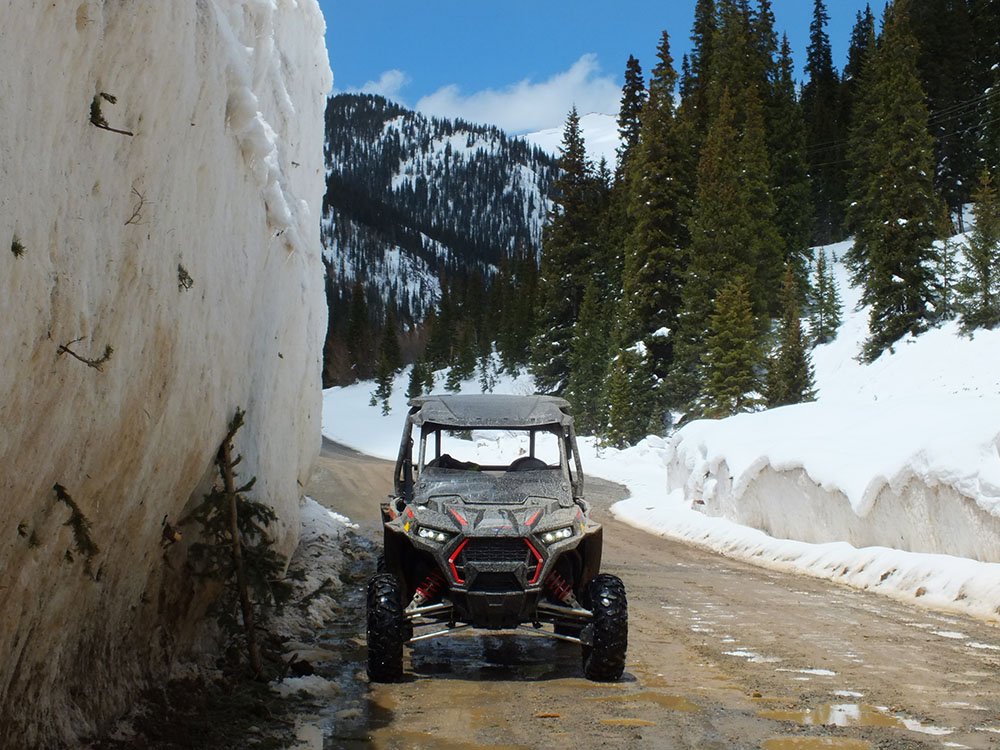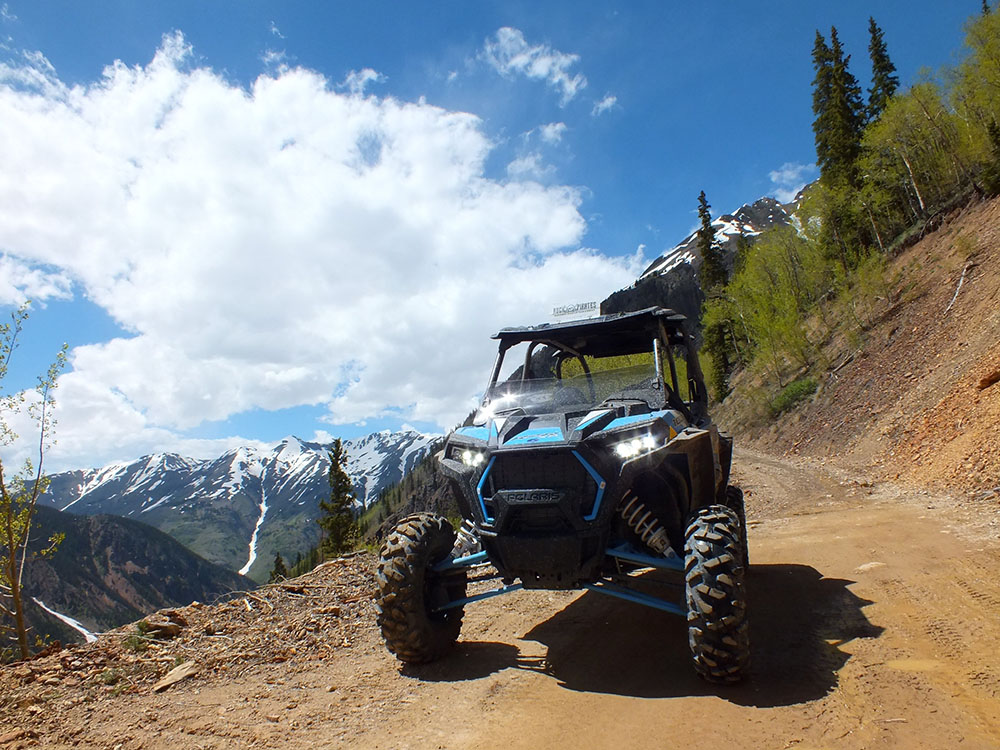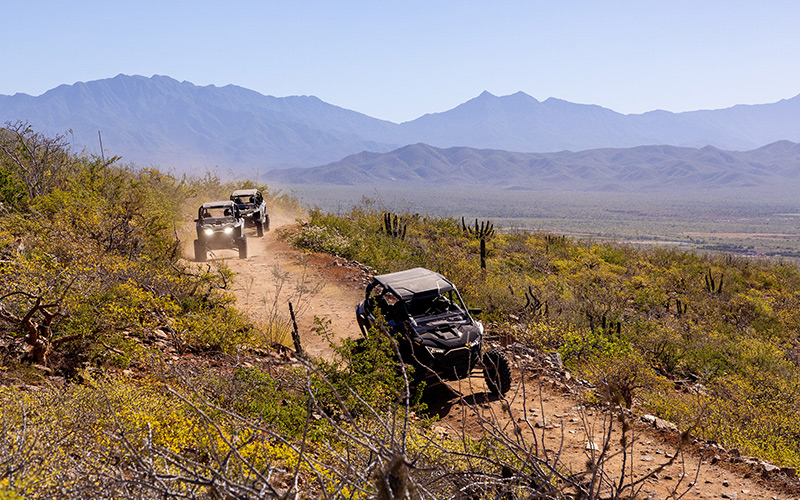All-Terrain Vehicles (ATVs) are celebrated for providing an exhilarating escape into nature, offering riders a unique way to explore rugged landscapes where few other vehicles can travel.
As thrilling as ATV riding can be, it inherently comes with risks, particularly when venturing into remote or challenging terrains. This necessitates a high degree of preparedness for any emergency situation. Understanding how to handle these potential crises not only enhances safety but also boosts the rider’s confidence on the trails.
This guide aims to equip ATV enthusiasts with essential strategies and practical tips to prepare effectively for emergencies, ensuring that every adventure remains safe and enjoyable.
So, how should you practice for an emergency situation on an ATV?
Start by learning potential emergencies on an all-terrain vehicle, understand basic motor vehicle safety, and implement a practice routine to do your best to avoid bad incidents.
Also, a basic knowledge of CPR and wilderness response can be helpful if someone in your group needs medical attention.

Understanding Potential ATV Emergencies
Types of Emergencies
ATV riders can face a variety of emergencies, ranging from mechanical failures and accidents, to natural challenges posed by the environment. Common situations include:
- Mechanical Failures: such as a broken chain, engine failure, or tire punctures.
- Accidents: which may involve collisions with obstacles, falls from the ATV, or rolling the vehicle.
- Getting Lost: especially in unfamiliar, remote areas without clear markings – even on public lands.
- Environmental Conditions: like being caught in a sudden storm, extreme temperatures, or crossing unsafe terrains (e.g., crossing thin ice).
Immediate Dangers
These emergencies can pose immediate risks including personal injury, prolonged exposure to harsh conditions, or becoming stranded far from help. For instance, a mechanical breakdown might leave you stuck in the wilderness, while an accident in a secluded area could result in serious injuries without quick access to medical aid. Understanding these dangers is the first step in effectively preparing for and mitigating them.
Basic Safety Knowledge and Preparations
Essential Safety Gear
Proper safety gear is the first line of defense against potential hazards during ATV rides:
- Helmet: Always wear a DOT-approved helmet.
- Goggles or Face Shield: Protects against flying debris and dust.
- Gloves and Boots: Protects hands and feet, providing better grip and shielding from cuts.
- Protective Clothing: Wear long sleeves and pants made from durable materials to protect against abrasions. Eye protection is also important as debris may get kicked up towards your face.
- Reflective Clothing or Vests: Enhances visibility, especially in low-light conditions.
Pre-Ride Checks
Performing comprehensive pre-ride checks can prevent many emergencies caused by vehicle failure:
- Fuel Level: Ensure you have enough fuel for the ride and some extra for emergencies.
- Tire Integrity: Check for proper inflation and signs of wear or damage.
- Brakes: Test the brakes at various speeds to ensure they are responsive and in good working condition. Start at a slow speed and work your way up to ensure no accidents happen.
- Lights and Signals: Check that all lights and signals are operational, especially if riding in dimly lit conditions.
- Emergency Supplies: Always carry a first aid kit, water, a multi-tool or repair kit, and a fire-starting kit. Optionally, a compact emergency shelter and extra food can be added depending on the ride’s duration and remoteness.
By preparing for emergencies through proper gear and pre-ride checks, ATV riders can significantly reduce the risks associated with their adventures.
The subsequent sections will delve into developing specific skills that are crucial for handling emergencies, including practical exercises to simulate potential scenarios and how to implement a routine practice schedule.
This comprehensive approach ensures that riders are not only prepared to respond to adverse situations but also equipped to prevent many common emergencies from occurring in the first place.

Developing Skills for Emergency Situations
The right skills can dramatically improve your ability to handle unexpected situations and mitigate the risks involved in ATV riding. Here’s how you can develop essential capabilities to manage emergencies proficiently:
Navigation Skills
Being able to navigate effectively is crucial, especially in remote areas:
- Map Reading: Understand how to read topographical maps to navigate through unfamiliar terrains.
- Compass Use: Learn how to use a compass in conjunction with a map to find your way.
- GPS Skills: Familiarize yourself with GPS devices; know how to set waypoints and track your route.
Communication Skills
When riding out, especially in groups, being able to communicate clearly can prevent and manage many potential emergencies and is essential trail etiquette.
- Let Someone Know Your Plan: Always inform someone about your travel plans and expected return.
- Cell Phone/Satellite Phone: Ensure your phone is fully charged and, if possible, carry a satellite phone in areas where cell service is unreliable.
- Emergency Signals: Understand and be able to use universally recognized signals for help, such as SOS; learn to use a whistle or a mirror for signaling.
Mechanical Skills
Basic mechanical knowledge can help you make quick repairs and get back to safety:
- Changing a Tire: Know how to remove a punctured tire, replace it with a spare, and secure everything back in place.
- Managing Engine Troubles: Learn basic engine troubleshooting—like checking the spark plug or cleaning the air filter.
- Chain Repairs: Be able to handle common issues with your ATV’s chain, such as adjusting tension or replacing a broken link.
Survival Skills
In case you are stranded, survival skills become essential:
- Finding Water: Know methods to collect and purify water.
- Signaling for Help: Use an emergency whistle, mirrors, or make ground signals visible from the air.
- Maintaining Body Temperature: Understand how to create an emergency shelter and protect yourself from hypothermia.
Practical Exercises to Simulate Emergencies
Regular drills and scenario-based training can enhance your readiness for real-life situations. Here’s how to practice effectively:
Regular Drills
Set up regular sessions to go through the motions of emergency procedures:
- Navigation Drills: Practice using a map and compass to navigate to a predetermined point.
- Mechanical Failure Drills: Simulate a mechanical failure and practice troubleshooting and repairing the issue.
- Accident Scenarios: Role-play an accident scenario where you or a fellow rider is injured, and practice administering first aid.
Scenario-Based Training
Create realistic scenarios that you might face and practice resolving them:
- Getting Lost: Simulate being lost by navigating an unfamiliar trail and using your skills to find your way back.
- Handling Sudden Storms: Practice what to do if a sudden storm hits; find shelter and secure your ATV.
- Injury Management: Simulate injuries like sprains or fractures and practice immobilizing the injury and handling the situation until help arrives.
Use of Safety Courses
Taking professional ATV safety courses can provide comprehensive training in all aspects of ATV riding and emergency management:
- Certified ATV Safety Courses: Enroll in courses certified by organizations like the ATV Safety Institute (ASI) or local equivalents.
- CPR and First Aid Training: These are critical skills that all riders should have; not only can they help in ATV-related incidents but are universally applicable in emergencies.
- Advanced Mechanical Workshops: Some courses offer advanced classes on ATV mechanics that go beyond the basics.
Through these practices, riders will not only improve their ability to prevent emergencies but also enhance their responses should one occur. Regular and realistic practice of these skills can make the difference between a minor incident and a critical emergency, ensuring that every ride is safe and enjoyable. The next section will discuss how to implement these practices into a regular routine to ensure they become second nature.
Implementing a Practice Routine
Consistency is key in emergency preparedness. Developing a routine practice schedule ensures that the skills necessary to handle ATV emergencies remain sharp and are second nature when needed. Here’s how to establish an effective practice regimen:
Frequency of Practice
Regular practice is essential for skill retention and improvement:
- Weekly Sessions: Aim for at least one practice session per week to go over one or more skills, rotating the focus among navigation, mechanical skills, and survival tactics.
- Monthly Drills: Once a month, conduct a comprehensive drill that incorporates all learned skills into a single, scenario-based practice, ideally in a realistic setting.
Realistic Practice Environments
Practicing in conditions that closely mimic potential real-life situations can greatly enhance your preparedness:
- Varied Terrain: Practice in different terrains and settings (woods, mountains, fields) to adapt skills to various environments.
- Weather Conditions: If possible, practice during different weather conditions to prepare for the unexpected challenges bad weather can bring.
Evaluating and Adapting Practices
It’s important to assess the effectiveness of your practice sessions regularly:
- Self-Assessment and Feedback: After each session, evaluate what went well and what could be improved. Seek feedback from fellow riders or instructors.
- Adaptation: Use the insights gained to adapt and evolve your practice routines to focus on weaknesses or introduce new, relevant skills as you progress.
Conclusion
Preparing for emergencies on an ATV is not just about having the right gear and knowing how to ride; it’s about being equipped to face any situation that might arise during your adventures. This involves a continuous commitment to practicing essential skills regularly and adapting to new challenges as they come.
Implementing a structured routine for these practices can ensure that you are always ready, whether navigating unfamiliar terrains, fixing a sudden mechanical issue, or managing survival situations.
Summary of Key Points
- Understand and prepare for common ATV emergencies: Know the types of emergencies that can occur and have a plan for dealing with them.
- Develop and maintain critical emergency skills: Regularly practice navigation, mechanical repairs, and survival tactics. Stay in control and keep risk at a minimum.
- Simulate realistic scenarios: Use practical exercises to train under conditions as close as possible to those you might actually face.
- Engage in certified safety courses: Enhance skills with professional training and ensure you are up to date with the latest in ATV safety.
Final Thoughts on Safety and Preparedness
Every ride on an ATV brings with it the potential for unexpected challenges. By embracing a proactive approach to emergency preparedness, riders can not only ensure their own safety but also enhance their overall riding experience. Remember, the goal of practicing for emergencies is not to instill fear but to empower you to enjoy your adventures with confidence and peace of mind.
In conclusion, the thrill of ATV riding comes with significant responsibilities, particularly regarding safety. Investing time in proper preparation and practice can dramatically reduce the risks involved and increase the enjoyment of every journey you undertake. Be safe, be prepared, and let the adventures continue with confidence.

